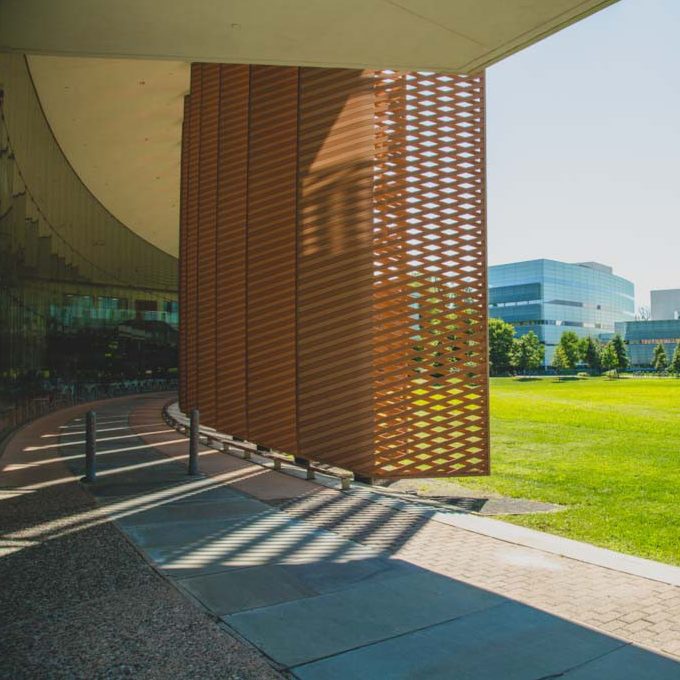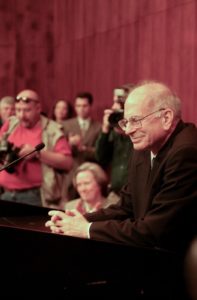
It’s a typical Monday night in J Street. All around me, students are hunched over notebooks and pecking at laptops. Faces are neutral, if not grim, betraying the anxieties of the week ahead. In the midst of the bustle of Princeton life, it’s all too easy to let this— “the grind”—become the uninterrupted norm. I often wonder, though, is this truly what’s best for our personal and academic development in the long run?
As you reflect on your own answer to that question, allow me to posit a suggestion. Stop what you’re doing (okay, finish reading this), and go take a walk. Yes, a walk. Outside. This may seem silly, but going on walks is one of the most important parts of my routine at Princeton. To explain why, I’ll first share one of my favorite stories about walking.
At the recommendation of a beloved former teacher, I recently picked up Thinking Fast and Slow by Princeton psychologist Daniel Kahneman. Near the beginning, Kahneman tells the touching story of his academic partnership and personal friendship with Amos Tversky. Kahneman and Tversky, as anyone who has taken Psych 101 knows, pioneered the field of behavioral economics. Throughout the 1970s, the duo cranked out groundbreaking research on heuristics, cognitive biases, and risk-taking behavior. Unfortunately, Tversky passed away before the academic community could honor the importance of this research, for which Kahneman was awarded the Nobel Prize in 2002.
Like other successful researchers, Kahneman and Tversky were somewhat unorthodox in their methods. Rather than sitting in a lab all day, for instance, the pair frequently took outdoor walks. On these walks, they engaged in free-flowing conversations about their research, or other topics of interest. Other academics might have questioned this allocation of time; after all—at least according to the traditional research mindset—discoveries happen in the lab, not on shady walking paths.
According to Kahneman, though, the walks were more than an arbitrary assertion of mobility. In fact, they were strategic, and they yielded tangible benefits. For starters, walking was enjoyable because it got the pair outside, away from the confines of their office. As we all have experienced, a change in scenery can make a bad day seem less crummy, or an intractable problem feel more manageable. Physiologically, walking leads to a slightly elevated heart rate, which stimulates mental activity. Remaining sedentary would obviously not produce this effect, while more strenuous activity—like sprinting 200 meters— leaves one so exhausted that they cannot think about anything but the physical task at hand. Thus, walking is the ‘sweet spot’ for an active mind. Kahneman and Tversky capitalized on this biological life hack, and I think the rest of us should too.

Unfortunately, Princeton’s academic culture isn’t always supportive of Kahneman and Tversky style study breaks. Students know exactly how long their walks to class are, and don’t ‘waste’ any more time meandering outdoors. Those with bikes forego walking completely, zooming to class with speed and efficiency. Walking is reduced to its instrumental value—getting from Point A to Point B.
Moreover, many students would probably say that taking a walk is the last thing they can fit into their busy schedules. Between problem sets, readings, and papers, Princetonians can easily feel obliged to glue themselves to their desks. As Kahneman and Tversky prove, though, walks can be an incredibly important component of academic success. Moreover, what’s good for us emotionally is also good for us academically, so even when walks are used for personal introspection, they still have academic utility.
I have found walking to be an essential part of my first two years here. Any time I feel mentally muddy, I know it’s time to head outside. On occasion, I’ll even find a ‘Tversky’ stand-in, which often catalyzes great discussions. While I’m out walking, I work through my thoughts one by one; in this way, formerly messy ideas get ironed out. And even when I can’t ‘solve’ something in one walk—say, derive the meaning of life—I still enjoy clarifying my thoughts. By and large, I return from my walks happier and more mentally organized than when I set out.
Princeton is a busy place, but we all must carve out time for things that are important to us. I encourage readers to try saving some time for a walk. I think you’ll enjoy the results! Plus, you’ll get to admire the beautiful campus that we call home. Happy walking!
— Shanon FitzGerald, Social Sciences Correspondent

